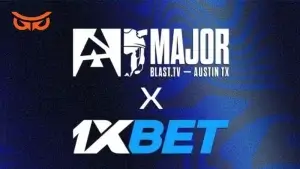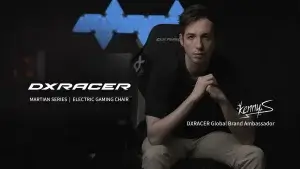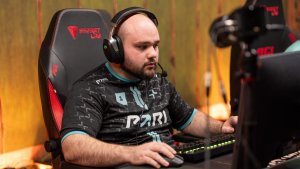Dota 2 is a game often notorious for its complexity and depth, but some of that difficulty in understanding just comes from the unique terminology the game has. With hundreds of terms that are used to describe the game, on top of 120+ heroes and thousands of abilities, items, and unique units, the game can seem entirely alien to the uninitiated.
Beyond this, the game and its predecessor has been around for decades, with some terms coming in and out of favor, with old names for heroes and items still used by casters and commentators, all adding to the confusion. It’s an entire lexicon that you have to pick up as you watch, play and bet on Dota 2 esports.

Below we’ve compiled a list of a 100 or so of the most common or confusing terms in Dota 2, along with a brief description. These will help you whether you’re a first time viewer, or someone looking to learn the game. Here’s a glossary of Dota 2 terms:
A
Ability – In Dota 2, heroes and some creeps have abilities. These are like special powers which are used to attack, defend, heal, or protect themselves. Generally heroes have three normal abilities, and a single ultimate ability for a total of four (Although this isn’t always the case).
Aegis – Can either refer to the Aegis of the Immortal, an in-game item that grants a second life upon death, or the Aegis of Champions, the trophy given to teams who win The International.
Aggro – In Dota, when a creep, tower, or other enemy starts attacking you, this is known as aggro. Units will often have aggro ranges based on their vision and coding. Aggroing an enemy can be a deliberate or accidental act, and is often used to manipulate creep behavior.
AoE – Area of Effect. Any ability with a wide area that it effects can also be known as an AoE.
Ancient – The Ancient is the structure at the center of each team’s base. When your Ancient is destroyed, the game is over.
Ancient Creeps – These are more powerful neutral creeps that live within the jungle. This often makes them immune to abilities and spells, and as a result, harder to farm and kill.
Attack – Each unit, hero or creep in the game has a basic Attack that they use. This is either ranged or melee, and in some cases is the unit’s primary way of attacking.
B
Backdoor – Towers and other buildings in Dota have protections to prevent them from being damaged when a creep wave isn’t also attacking them. If you bypass this protection, you’re “backdooring”
Backliners – Heroes who stay towards the back or need to be at range in team fights. Ranged carries and supports usually fall into this category.
Barracks – These buildings create minions to attack the enemy base in waves. Each lane has two barracks situated in the enemy base/highground, one for ranged creeps, one for melee creeps.
Base – Each team has a base which contains a number of buildings. These include six Barracks, five Effigys, five towers, and an Ancient. Also see highground.
Blocking – Creeps and heroes in Dota have collision detection, meaning you can’t occupy the same space on the map as another unit. This means you can also block creeps from advancing down the lane, preventing them from being damaged or farmed by the enemy.
Blocking a Camp – Blocking can also be related to jungle camps. If you place a ward, or other item in a jungle camp, or stand there when it is about to respawn, this will ‘block’ it from respawning. This is usually done to deny farm.
Buyback – In Dota 2, heroes who are dead can spend some of their gold to buy back from the dead, bypassing their Death Timer. Once you’ve bought back, this ability goes on cooldown. The cost of a buyback is related to a heroes’ Net Worth.
C
Carry – The player or hero on a team that receives the most resources, and as a result can ‘carry’ the entire team. These are typically heroes who can scale well with gold and experience. Players who play these heroes are also called carries.
Camp – Camping a lane means to constantly gank or roam to it to attempt to get kills. If a support or other laner is camping, it’s often to help a carry get a lead.
Cannon Wave – After several waves, a Cannon, or Siege Minion will spawn. These waves are especially valuable as they can heavily damage towers, and also have more gold value. The first spawns at five minutes, and increases in frequency as the game continues.
Creeps – creeps are a general term for the non-player controlled units. Creeps for the Radiant and Dire spawn from the Barracks and then make their way down Lanes to attack Towers and eventually destroy the Ancient. Creeps are divided into Melee, Ranged, and Siege.
Creep Block – You can block creeps moving down a lane by standing in front of them. This can be used to manipulate waves and prevent the opponents from farming.
Core – Three players on a Dota 2 team are Cores. These Cores take the majority of the farm in the place of the Supports.
CS – Creep Score, the number of creeps you’ve had the last hit on. The higher a player’s CS, the more net worth and experience they’re likely to have.
D
DD – Abbreviation for the Double Damage rune, a rune that spawns in the river.
Death Timer – When a hero dies, they’ll have a cooldown before they can respawn. This is called a Death Timer, and the length increases based on number of deaths and length of game.
Deny – In Dota, you can ‘Deny’ a kill on an allied creep or hero by attacking them just before they’re about to be killed. They have to be on very low health, and the credit for the kill will be “Denied” from your opponent.
Defense of the Ancients – The full title of the original Warcraft III DotA mod.
Deso – Desolator, an abbreviation of the item’s name
Dieback – A term given to when a player buys back after dying, only to die again almost instantly.
Dire – Referring to the right hand side of the map, and the team defending that side’s Ancient. In the original DotA, heroes fell into the Radiant or Dire category.
Disable – Abilities that cause a character to be given a status that disables some aspect of them, such as a stun, blind, mute, slow, etc.
Dive – To dive into tower aggro to attack an enemy.
DoT – Damage over Time. Abilities that will do damage over an extended period rather than all upfront.
Dust – Dust of Appearance. An item that reveals hidden units.
E
Easy Lane – An alternative name for the Short Lane, or Safe Lane which is the lane where the Tier 1 tower is closest to the enemy Ancient and furthest from the allied Ancient. It’s called Easy or Safe because it’s hard for enemies to gank you and easier to retreat to the protection of your tower.
F
Farming – Farming is the act of killing creeps for gold and experience.
Feeding – If a player is Feeding, then they’re giving away kills, gold, and experience to the enemy team in a large amount. This can be deliberate or accidental.
FF – Forfeit, typed to surrender and end the game in pro play.
Fountain – The building at the back of a team’s base where heroes spawn after they die. This is defended by an extra powerful turret which will deals tremendous damage to prevent camping.
Frontliners – Tanks and other high-health and melee heroes who prefer to be in the front during fights.
G
Gank – To travel from your own lane to another to attempt to kill another hero.
Gem – Short for Truesight Gem, an item that grants true sight (The ability to see things that are invisible). Is dropped by the hero on death.
Gold – The currency granted to players for killing creeps and heroes, and used to purchase items.
GPM – Gold Per Minute. A stat used to measure how effective a player is at farming. Can also be used to refer to items that passively generate gold (GPM Items).
H
Hard Carry – Also known as Position 1. The hero on a team that receives the most farm and plays in the safe lane.
Hard Lane – Also known as Offlane, Suicide lane, or Long lane, is the lane furthest from the enemy Ancient, and most dangerous, as heroes in it are vulnerable to ganks, and have a long way to run back to their own Tower.
Hard Support – Also known as Position 5. The support who receives the least gold and resources, and lanes with the Hard Carry.
Hero – The unit players control in the game. There are over 120 different heroes in Dota 2.
Highground – Each team’s base is on a highground area, and laying siege to the enemy base is often called “going Highground.”
J
Jungling – Jungling is the act of farming Jungle. Unlike other MOBA games, Dota 2 rarely has a dedicated Jungle position, and instead players who need extra farms will Jungle.
Jungle Camp – A group of creeps in the Jungle are part of a Jungle Camp
Jungle Creep – Creeps in the Jungle are called Jungle Creeps.
K
KotL – An abbreviation for the hero Keeper of the Light
L
Lane – In Dota there are three lanes which lead to each teams base. These are paths which creeps follow to attempt to siege down the opponent’s buildings. These lanes are called Safe Lane, Middle Lane, and Offlane, and
Last Hit – If you get the final strike on an enemy, you’re awarded bonus gold. Last Hitting is the act of getting the final hit on a creep to get that bonus gold.
Lesh – An abbreviation for the hero Leshrac
Long Lane – Also known as Offlane, Suicide Lane, or Hard Lane, is the lane furthest from the enemy Ancient, and most dangerous, as heroes in it are vulnerable to ganks, and have a long way to run back to their own Tower.
M
Macro – Macro in Dota refers to the large-scale strategic plays such as moving around the map as a team. Compare with Micro.
Major – A Major tournament. In the past, these were sanctioned by the game’s developer Valve, but now Major usually just refers to a large tournament.
Mana – Mana is the resource that almost all hero abilities and spells in the game use. Heroes recharge mana over time.
Megas/Mega Creep – When all the Barracks for a team are destroyed, Mega Creeps, highly empowered versions of regular creeps, will spawn. Once Megas have spawned for the opposing team, winning is usually impossible.
Micro – Micro refers to individual skill within the game, such as managing units, or creeps, or engaging in high-skill, intensive actions.
Mid/Middle – The Middle Lane, also refers to the position of the player in Middle Lane.
N
Net Worth – The total value of a hero including all the items they possess.
Nuke – An ability or set of abilities that can do a very large amount of damage to an enemy hero or kill them out right. Heroes who have abilities like this are called Nukers.
O
Obs – Short for Observer Ward. A Ward that provides standard vision. Invisible without True Sight.
OD – Outworld Devourer/Outworld Destroyer
Offlane – Also known as Long Lane, Suicide Lane, or Hard Lane, is the lane furthest from the enemy Ancient, and most dangerous, as heroes in it are vulnerable to ganks, and have a long way to run back to their own Tower.
Offlaner – The hero or player who plays in the Offlane. These heroes are often tanky, or don’t require much farm to be strong as the lane is more difficult to play.
OoM – Out of Mana (Sometimes pronounced phonetically)
Orb walk, Orb walking – Orb walking is the ability to stutter step in between your basic attacks, often ‘orbiting’ your target. Characters like Windranger and Drow Ranger are emblematic of this skill.
P
Pet – A creep or unit under the control of a hero.
Pit Lord – The old name for Underlord in the original WarCraft III mod.
Position 1, 2, 3 etc. – In Dota 2, the five player positions are often abbreviated as either “position 1” or just by their number. The numbers and their corresponding positions are 1 – Core, 2 – Mid, 3 – Offlane, 4 – Soft Support, 5 – Hard Support
Proc – Short for Programmed Random Occurrence or Procedure. When a game mechanic activates, such as damage over time (DoT) actives.
Pub/Pubs/Pubbing – Short for Public Game. This usually refers to ranked play on a public server, the default way to play ranked, as opposed to organized tournaments.
Q
QoP – An abbreviation for the hero Queen of Pain
K
Kite/Kiting – Attacking an enemy while staying out of their range of attack, often leading them away from their intended location.
R
Radiant – The lefthand side of the map, or referring to the team whose Ancient is on that side. Opposite of the Dire. In the original DotA, heroes fell into the Radiant or Dire category.
Rat/Ratting – Playing on the other side of the map to your team, or without your team. Often used prejoritively.
Rapier – An abbreviation of Divine Rapier, a high damage item that is seen as a high risk, high reward option, as it is dropped on death.
Rax – Abbreviation of Barracks.
River – A river runs through the center of the map, and is one of the primary ways of navigating from the northwest to southeast sides of the map.
Ro3 – An abbreviation for Roshan, often used in China where the number 3 is pronounced ‘sān.’
Rosh, Roshan – A powerful neutral creep who is stronger than most heroes in the game. A raid boss who needs to be battled by multiple team members. Drops the Aegis of the Immortal on
S
Safe Lane – An alternative name for the Short Lane, which is the lane where the Tier 1 tower is closest to the enemy Ancient and furthest from the allied Ancient. It’s called Easy or Safe because it’s hard for enemies to gank you and easier to retreat to the protection of your tower.
Sentry – Short for Sentry Ward. A Ward that reveals invisible enemies and wards.
Sheep Stick – Referring to Scythe of Vyse, an item which polymorphed you into a sheep in the original Dota, but currently turns you into a Pig.
Smoke – Smoke of Deceit, and item that causes allied heroes close to you to become invisible.
Snowballing – The act of gaining a significant lead, becoming out of control for your opponents to handle, like a snowball rolling downhill.
SnY – Sange and Yasha, part of a trio of swords which can be combined to make powerful items.
Spell – Another term for an ability, but usually denotes ranged and magical based abilities.
Spirit Hero – Denoting one of the four Spirit Brother heroes, Earth Spirit, Ember Spirit, Storm Spirit, and Void Spirit.
Squishy/Squishies – A term for heroes with low or little health. Often means backliners, or support heroes in the late game.
Stack – In Dota, you can cause multiple Jungle Creeps to spawn in a single Jungle Camp by aggroing them at the right time, causing them to “Stack.” This is done to create better farming opportunities.
Stack (team) – A Stack is also another term for a team in Dota 2. Usually a group of unsigned players. “A Dota 2 Stack.”
Stygian – An alternative name for Desolator, referring to its original name in the WarCraft III Mod.
Soft Support – Also known as the Position 4. The support who lanes with the Offlaner. Often also known as Roaming Support due to their role in ganking and jungling.
Solo Lane – A lane with no Support. Mid is usually the only lane that is solo, but in rare occasions, other lanes can be Solo.
Soloq/Solo Queue – Queuing for games alone. See also Pubs.
Super Creeps – After the two Barracks in a lane are destroyed, that Lane will produce Super Creeps, powered-up versions of Creeps.
Support – On Dota 2 teams, two players play the role of support, while the other three play Cores. Supports help the cores by giving up farm, buying wards, healing them, etc.
T
Tank – Tanks are heroes who can take a lot of damage. Tanking something is to take damage for another hero, or resist large amounts of damage.
Tower – Each team has 11 towers (12 with the Fountain) protecting their buildings. Three of these towers are in each lane, with two defending each Ancient. Towers automatically attack the closest aggressive enemy creature to them.
TP – Short for Town Portal Scroll or Teleport. Town Portal Scrolls are items which allow you to teleport after a brief casting time.
True Sight – The ability to see invisible units. Also the name of a Dota 2 documentary series.
U
Ulti/Ultimate – The majority of heroes have an ultimate ability that is not unlocked until level six. This ability is often the iconic ability of the hero, and the most powerful.
W
Ward/Wards – Small items which can be placed on the map to grant vision in a nearby area.
X
XP – Experience Points. You earn Experience passively over the course of a game, as well as for kills and being in the vicinity when enemies die. Experience contributes towards earning levels, with 30 being the max level in a game of Dota 2.
Z
Zoning – The act of preventing an enemy hero from moving into a particular area. Sometimes abilities can be cast as warning shots or just to prevent enemies from moving in a particular area, causing zoning.
Zoo – A hero that has control over a lot of creeps or pets, is said to be in control of the “Zoo.” Some heroes are known as Zoo heroes.
Other esports glossaries to visit
We hope this glossary has helped you understand the intricate world of Dota terminology. We invite you to explore our other terminology pages:























